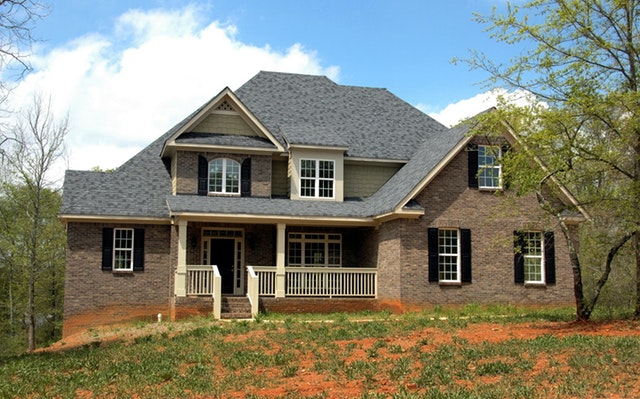What’s Ahead For Mortgage Rates This Week – November 23, 2020
 Last week’s economic reporting included readings on housing market conditions, sales of previously owned homes, and housing starts and building permits issued. Weekly reports on mortgage rates and jobless claims were also released.
Last week’s economic reporting included readings on housing market conditions, sales of previously owned homes, and housing starts and building permits issued. Weekly reports on mortgage rates and jobless claims were also released.
NAHB: Homebuilder Confidence Hits Record High in November
The National Association of Home Builders reported a fourth consecutive record high for builder confidence as November’s index reading of 90 exceeded October’s reading of 80. Any reading over 50 indicates that most home builders are confident about housing markets.
Component readings for the Housing Market Index also rose. Builder confidence in current market conditions rose six points to 96. Builder confidence in housing market conditions within the next six months rose one point to 89 and builder confidence in buyer traffic in new housing developments increased by three points to an index reading of 77. Readings of 50 or more for buyer traffic were rare until recent months. Factors driving builder confidence include high demand for homes and record low mortgage rates. High demand for single-family homes is rising due to relocation to suburbs and increased demand for larger homes.
Housing Starts Increase as Building Permits Issued Hold Steady
Commerce Department readings for October show that housing starts rose to 1.530 million starts on a seasonally-adjusted annual basis. Analysts expected a pace of 1.490 million housing starts based on 1.459 million starts reported in September. 1.545 million building permits were issued in October, which matched September’s reading.
Mortgage Rates Hit Another Record Low; Jobless Claims Data Mixed
Freddie Mac reported new record low mortgage rates for the fourth consecutive week. Rates for 30-year fixed-rate mortgages averaged 12 basis points lower at 2.72 percent; rates for 15-year fixed-rate mortgages averaged 2.28 percent and were six basis points lower. Rates for 5/1 adjustable rate mortgages dropped by 26 basis points to 2.85 percent on average. Discount points averaged 0.70 percent for 30-year fixed-rate mortgages and 0.60 percent for 15-year fixed-rate mortgages. Points for 5/1 adjustable rate mortgages averaged 0.30 percent.
First-time jobless claims rose to 742,000 claims filed; analysts expected 710,000 claims filed based on the prior week’s reading of 711,000 initial jobless claims filed. Ongoing jobless claims fell to 6.37 million claims filed as compared to 680,000 continuing jobless claims filed in the prior week.
October sales of previously-owned homes rose to 6.85 million sales on a seasonally-adjusted annual basis as compared to September’s reading of 6.80 million sales of previously-owned homes.
What’s Ahead
This week’s scheduled economic reporting includes readings from Case-Shiller Indices on home prices; new home sales will also be released along with the University of Michigan’s report on consumer sentiment. Weekly readings on mortgage rates and jobless claims will also be released.

 The National Association of Home Builders reported a housing market index reading of 74 in February; the index reading was one point lower than for January and was only two points below the highest reading of 76 reported in December. Readings over 50 indicate that most builders consider housing market conditions to be positive.
The National Association of Home Builders reported a housing market index reading of 74 in February; the index reading was one point lower than for January and was only two points below the highest reading of 76 reported in December. Readings over 50 indicate that most builders consider housing market conditions to be positive. Last week’s economic reports included the National Association of Home Builders Housing Market Index along with readings on consumer sentiment and weekly reports on mortgage rates and new jobless claims.
Last week’s economic reports included the National Association of Home Builders Housing Market Index along with readings on consumer sentiment and weekly reports on mortgage rates and new jobless claims. Last week’s economic reports included readings from the National Association of Home Builders on housing markets; the National Association of Realtors® released data on sales of previously-owned homes and the Commerce Department released readings on housing starts and building permits issued. Weekly reports on mortgage rates and new jobless claims were also released.
Last week’s economic reports included readings from the National Association of Home Builders on housing markets; the National Association of Realtors® released data on sales of previously-owned homes and the Commerce Department released readings on housing starts and building permits issued. Weekly reports on mortgage rates and new jobless claims were also released. The National Association of Home Builders Housing Market Index shows steady builder confidence in housing market conditions. September’s index reading of 68 was one point higher than August’s reading. Any reading over 50 indicates that most home builders surveyed view housing market conditions as favorable. August’s original index reading was adjusted upward by one point.
The National Association of Home Builders Housing Market Index shows steady builder confidence in housing market conditions. September’s index reading of 68 was one point higher than August’s reading. Any reading over 50 indicates that most home builders surveyed view housing market conditions as favorable. August’s original index reading was adjusted upward by one point.